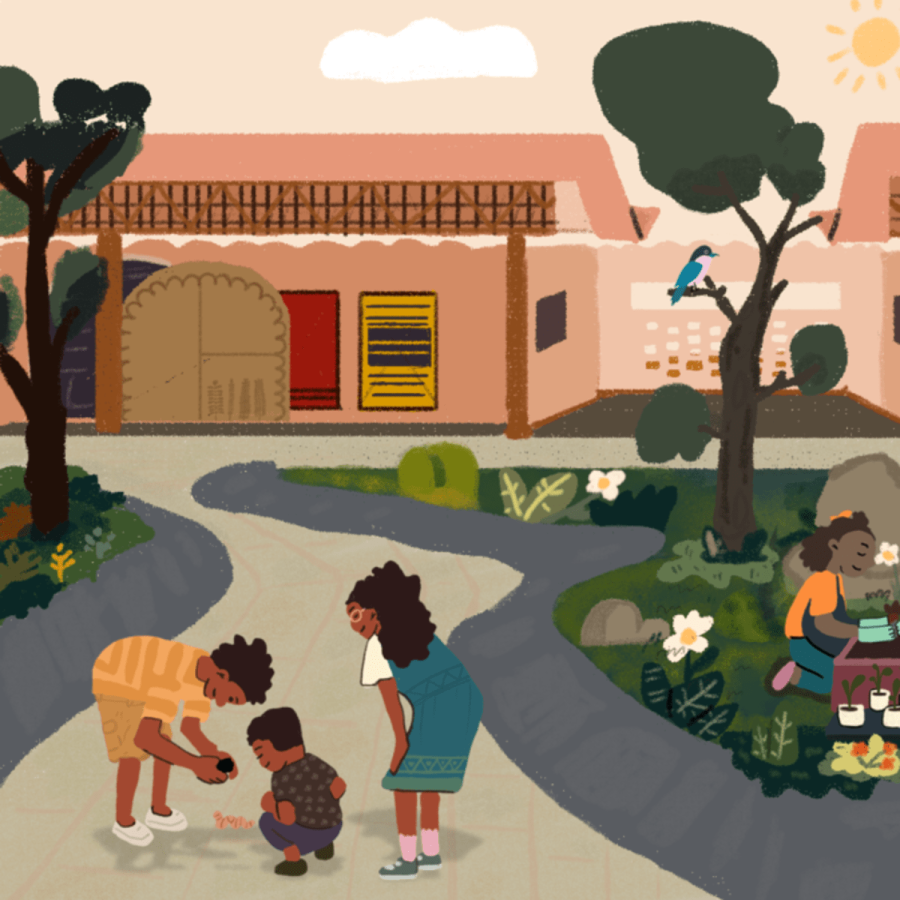By integrating nature into urban development, cities can enhance their climate resilience, reduce the impacts of climate change, improve the well-being of residents, and create more sustainable and livable urban environments.
Key concepts
Educate and engage the community
Raise awareness among residents, businesses, and policymakers about the importance of urban nature for climate resilience. Encourage community participation in urban greening initiatives, involve schools and universities in educational programs, and collaborate with local organisations and stakeholders to drive positive change.
Increase green spaces
Create more parks, gardens, and urban forests. These spaces absorb and store excess water, reduce the urban heat island effect, improve air quality, and provide habitats for biodiversity. Green spaces can also serve as recreational areas and improve the overall quality of life in cities.
- Create urban wetlands and green corridors: Develop or restore urban wetlands and green corridors along water bodies, streams, or rivers. These natural areas act as buffers against flooding, promote biodiversity, provide natural habitats for wildlife, and enhance the aesthetics of the city. Wetlands also help filter and purify water, improving its quality.
- Promote rooftop gardens and green walls: These features help insulate buildings, reduce energy consumption for cooling and heating, and mitigate the urban heat island effect. They also improve air quality by absorbing pollutants and provide habitats for plants and animals.
- Preserve and enhance urban biodiversity: Protect and restore urban habitats, including native plant species, urban forests, and wildlife habitats. Urban biodiversity is essential for ecosystem resilience, pollination, and pest control. Creating green corridors and connecting green spaces can enhance biodiversity by allowing species to move and adapt to changing conditions.
- Foster urban tree planting and maintenance: Trees provide shade, reduce heat, absorb carbon dioxide, and improve air quality. They also help in managing stormwater, preventing erosion, and creating a sense of natural beauty within the city. Increase the number of trees in urban areas and ensure their proper maintenance.
Incorporate nature-based infrastructure
Nature-based infrastructure offers multiple benefits, including climate resilience, improved water management, and increased biodiversity. Consider nature-based solutions in infrastructure projects, such as green roofs on buildings, natural shoreline protection, and constructed wetlands for wastewater treatment.- Implement nature-based solutions for stormwater management: Traditional stormwater management often involves routing stormwater runoff through pipes and concrete channels, which can lead to increased flooding, erosion, and water pollution. In contrast, nature-based solutions use vegetation, soils, and natural processes to slow down, capture, treat, and infiltrate stormwater on-site, allowing it to be absorbed by the ground or used by plants.
-
Create rain gardens: Shallow depressions planted with native vegetation that collect and infiltrate stormwater from impervious surfaces.
-
Protect floodplains: floodplains are areas adjacent to rivers that periodically flood during periods of high discharge; safeguarding land to store water during these events reduces the risk to homes, businesses, infrastructure and life during a flood.
-
Replace areas with Permeable Pavements: Porous surfaces that allow water to pass through, reducing runoff and promoting infiltration.
-
Develop the Urban Tree Canopy: Increased tree planting in urban areas to intercept and absorb rainfall and reduce stormwater runoff.
-
Introduce Rainwater Harvesting: Collecting and storing rainwater for later use, reducing the demand on municipal water supplies.
Case Studies







